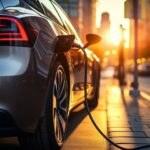Maybe you’ve been swayed by the online hype, or maybe you’ve already dabbled in using electric bikes, but now you’re seriously thinking that you just might be ready to take the next step. But are you truly ready to have your very own electric car?
With governments offering incentives for those who are looking to buy an electric vehicle (EV), it’s no wonder that more and more people around the world are making the transition from gasoline-powered automobiles to their electric counterparts. Other influencing factors are the continuing advancements in battery technology, vehicle performance, and charging infrastructure. It’s definitely easier to make the electric switch now, but you need to understand that owning and maintaining an EV requires some education on the subject first before you actually sign that contract.
What makes electric automobiles an attractive option for buyers?
- These cars are environment-friendly because they produce zero tailpipe emissions, which contributes to cleaner air and reduces the amount of greenhouse gases in the atmosphere.
- Electricity tends to be cheaper than gasoline, so you’d end up saving a lot on fuel costs. Maintenance expenses can also be reduced since EVs have fewer moving parts.
- As mentioned earlier, many governments offer their citizens rebates, tax credits, and various other incentives to encourage them to buy electric cars. So, you’d be saving money when you purchase one.
- Electric motors can give you instant torque, so you can accelerate much more quickly. You’ll also get to enjoy a smooth and quiet ride due to a lack of engine noise.
What are the key EV components you need to know?
- The battery is your electric car’s heart, which stores the electrical energy that’s needed to power the motor.
- The electric motor takes this electrical energy from the battery and converts it to mechanical energy, which makes the car move.
- An inverter converts the battery’s direct current (DC) power to alternating current (AC) power for the electric motor.
- The charging system allows you to replenish the battery using an external source, and this system typically includes an onboard charger, a charging port, and charging cables.
What information is essential when it comes to charging an EV?
When it comes to charging your EV, there are three main levels:
- Level 1 is the slowest method because it uses a 120-volt household outlet. It’s a good option if you prefer overnight charging for your vehicle or if you need to top up your battery.
- Level 2 uses a 240-volt outlet and is significantly faster compared to Level 1. For the majority of EV owners, this is also the most popular charging method.
- Level 3 uses high-power DC chargers and can give your battery a significant amount of charge in only a short time. It’s also known as DC fast charging, and it’s what’s typically available at public charging stations.
How do you maintain an electric vehicle?
Though EVs are easier to maintain than traditional gasoline cars, you still need to do regular maintenance work to make sure it keeps performing well.
- Maximise your battery life by avoiding consistently charging up to 100% and draining it to 0%. The most common recommendation is to keep the battery charge between 20% to 80%. You should also minimise its exposure to temperature extremes since these can accelerate the degradation of the battery. Always use the appropriate level of charging and avoid using DC fast charging too frequently since this can heat up and stress the battery.
- EVs tend to be on the heavier side compared to non-electric cars because of their battery packs, and the instant torque can cause increased wear on your tyres. So, make sure that you schedule regular alignments, tyre rotations, and pressure checks. Engage the services of professional Gold Coast tyre and auto specialists to help you look after your tyres.
- Most electric automobiles use regenerative braking, which helps to recharge the battery while slowing down the vehicle. Although this also lessens the rotor and brake pad wear and tear, it’s still a good idea to schedule an occasional inspection and check your brake fluids on a regular basis.
- Electric cars have cooling systems that regulate temperatures for the motor, battery, and different electronic components. It’s important to check coolant levels often to make sure the system’s integrity isn’t compromised.
- Replace your cabin air filters on a regular basis to ensure you keep breathing good quality air inside your ride. This is especially important if you have family and children using the vehicle, too. Replace windscreen wipers as well once they become too worn.
- Make sure that your EV is able to receive any software updates by either keeping it connected to Wi-Fi or using a cellular connection. These software updates are pushed over the air to add new features, resolve any potential issues, and generally improve the performance of your vehicle.
What’s the best maintenance schedule for EVs?
Most manufacturers typically recommend that drivers get their electric cars inspected and serviced every 12 months. Some would also recommend that you do maintenance work every 16,000 to 32,000 kilometres (roughly 10,000 to 20,000 miles). Whichever may come first, always make sure that you get a professional to inspect the motor, battery, and other electrical parts. Check the tyres, brakes, and suspension; replace the filters; and check and top up coolant and brake fluids.
You can enjoy many benefits if you’ve got your own electric automobile, and these benefits include lower running costs and a great driving experience, not to mention the fact that you’re helping protect the environment. Just remember that for all the technological advancements packed into its body, an EV still requires regular care so that it will provide you with a great performance that can last for years. By understanding all that goes into looking after your electric vehicle, you can be sure to enjoy a smooth, trouble-free experience. So, with all that said, are you finally ready to be the proud owner of an electric car?













